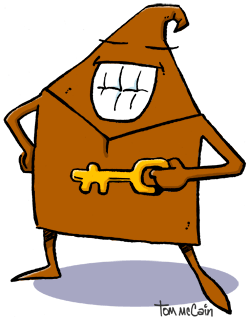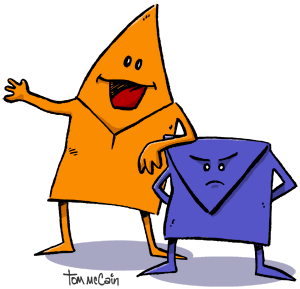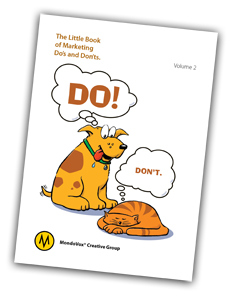 You have a lot of direct mail formats available—postcards, self-mailers, dimensional mailers and, of course, the good old envelope. Many factors from budget and objective to the nature of your offer and audience enter into your format decision. So let’s begin our discussion with when you should use an envelope package.
You have a lot of direct mail formats available—postcards, self-mailers, dimensional mailers and, of course, the good old envelope. Many factors from budget and objective to the nature of your offer and audience enter into your format decision. So let’s begin our discussion with when you should use an envelope package.
Four Reasons to Choose Envelope Packages.
The first and most obvious is that envelopes provide an ideal solution when your offer requires more space for multiple components such as a cover letter, brochure, buckslip and reply envelope. After all, something has to keep the components from falling on the ground.
Second, envelopes better accommodate the fact that people buy in different ways. The letter-brochure combo provides alternate ways of presenting information—one more verbal and fact oriented, the other more visual.
Third, real people send things to real people in envelopes. Recipients feel more catered to when they receive an envelope package—especially a personalized one—and that’s essential in today’s marketplace.
Fourth, envelopes tend to look less promotional than postcards and self-mailers, so they have the ability to lift you above the marketing fray with a classier presentation.
Then There’s the Offer Thing.
Some types of offers just beg for an envelope. After analyzing lots of tests and studies, most direct marketing authorities consider envelopes more effective for these types of offers:
- Financial products—loans, credit cards, securities, insurance
- Magazine and newspaper subscriptions
- Continuity/membership clubs
- Charitable solicitations
- Professional services
- High-ticket consumer goods
- Technology products
- Telephone services
But perhaps the most important and often overlooked reason to use an envelope is that it can contain a letter. A real, honest-to-goodness personal letter. Oh, I know we don’t write so many of them anymore, but that’s not because they don’t work.
If fact, letters are incredibly powerful either as a standalone component or as part of a package. Many direct mail authorities still believe that a letter is the most important single element in a direct mail package. And many tests show that letters can hold their own or even exceed the performance of postcards and self-mailers.
Consider including a letter when your message needs to:
- Come from one person by name.
- Be addressed to an individual by name.
- Requires added credibility or confidentiality.
And the more personalized you can make the content, the higher the letter’s impact will be.
Sealing It Up.
Well, I suppose I digressed a bit from envelopes. But perhaps it highlights the most important point of all. Nothing really stands alone in marketing. We talk about integrated media while sometimes forgetting the integrated relationship of components within a single element like a direct mail package.
Now about that envelope….
By Larry Bauer
Want Expert Advice?
MondoVox Creative Group can help you develop direct mail packages that result in sales. For more information, email Julia Moran Martz.
You can connect with Julia Moran Martz on LinkedIn. Or follow her on Twitter.









